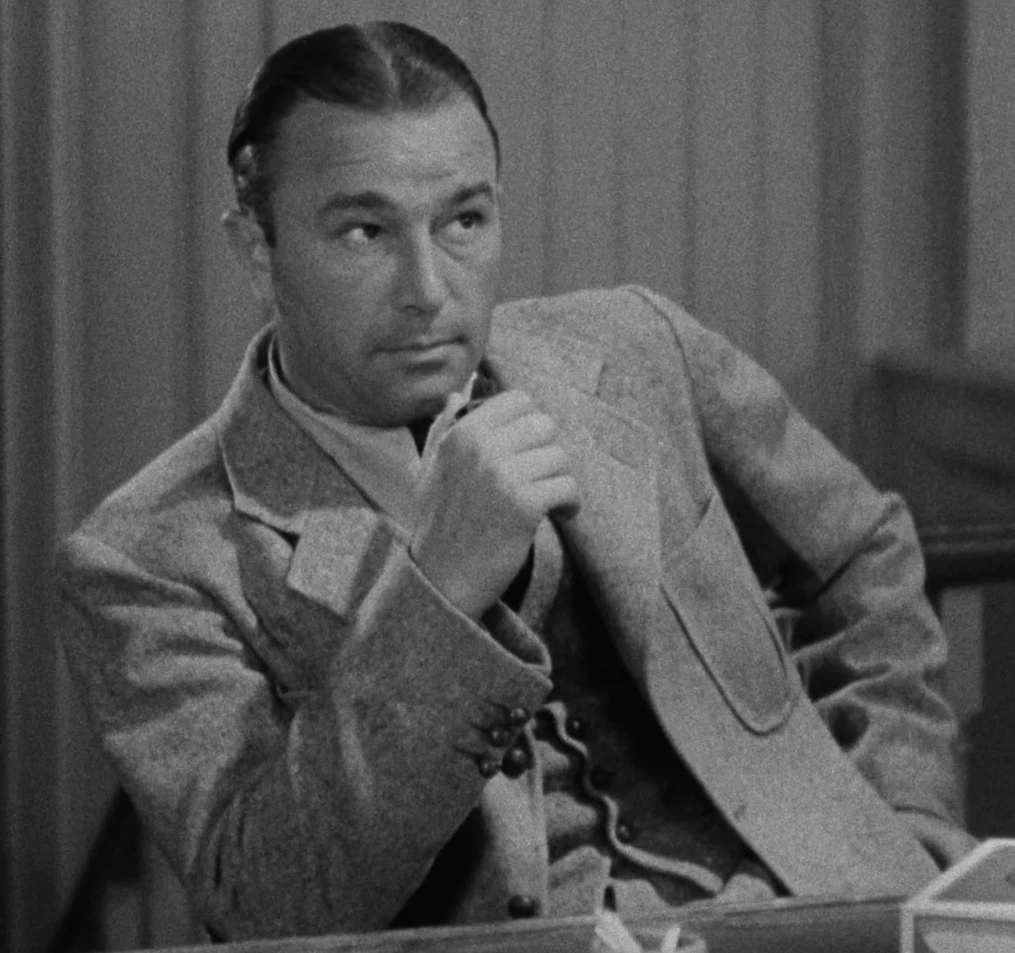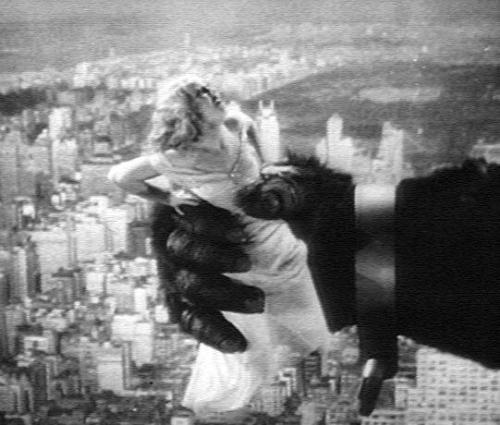 |
| Fig. 1: Original theatrical poster by Keye Luke |
Though it is not made obvious, Carl Denham (fig. 2) is largely the villain of the film. It is because of him that the lives of so many other characters are ruined. Ann is kidnapped and traumatised, a good majority of the crew taken to Skull Island die horribly, along with several New York residents at the end of the film, and the village the natives to Skull Island live in is destroyed and left unprotected. Despite this, the only characters portrayed as "bad" are the natives of Skull Island (fig. 3) and Kong himself.
 |
| Fig. 2: Carl Denham films Ann on the ship. |
 |
| Fig. 3: Natives of Skull Island. |
 |
| Fig. 4: Ann in the giant hand of Kong. |
Overall, King Kong majorly influenced the film industry. The story is simple, but visually the film is incredibly interesting, even today. The animation looks as old as it is, but has a style to it that makes it something of a work of art. Since the film was made, there have been major leaps and bounds in animation, but does photorealistic animation look as interesting? Scenes in Wes Anderson's The Grand Budapest Hotel use miniature models, that are incredibly detailed, yet clearly not real. This makes these parts of the film more engaging, and it's the same with King Kong. The beginning of the film, which mostly involves scenes on the boat to Skull Island, are nowhere near as enthralling as the scenes with Kong and various other beasts on the island. The animation made King Kong what it was, and it is thanks to the amazing work of the animators that it continues to be a well known film today.
Images:
Figure 1. Original theatrical poster by Keye Luke (1933) King Kong [Advertisement] At: https://en.wikipedia.org/wiki/King_Kong_(1933_film) (Accessed on: 09.10.15)
Figure 2. Carl Denham films Ann on the ship. (1933) From: King Kong. Directed by: Merien C. Cooper, Ernest B. Schoedsack. [Film Still] United States: RKO Radio Pictures. At: http://kingkong.wikia.com/wiki/File:Carl_Denham_1933.jpg (Accessed on: 09.10.15)
Figure 3. Natives of Skull Island. (1933) From: King Kong. Directed by: Merien C. Cooper, Ernest B. Schoedsack. [Film Still] United States: RKO Radio Pictures. At: http://pyxurz.blogspot.co.uk/2011/09/king-kong-page-2-of-5.html (Accessed on: 10.11.15)
Figure 4. Ann in the giant hand of Kong. (1933) From: King Kong. Directed by: Merien C. Cooper, Ernest B. Schoedsack. [Film Still] United States: RKO Radio Pictures. At: http://www.bookdrum.com/books/gravitys-rainbow/9780099533214/bookmarks-276-300.html?bookId=12485 (Accessed on: 10.11.15)
Bibliography:
Ebert, R. (2002) 'King Kong' In: www.rogerebert.com 02.03.02 [online] At: http://www.rogerebert.com/reviews/great-movie-king-kong-1933 (Accessed on: 09.10.15)

Well-written review Eleanor :)
ReplyDeleteTry and make sure that you use a broad selection of sources for your quotes, rather than just rely on one, as this will give you more depth in your discussion.
Bring on the next one :)